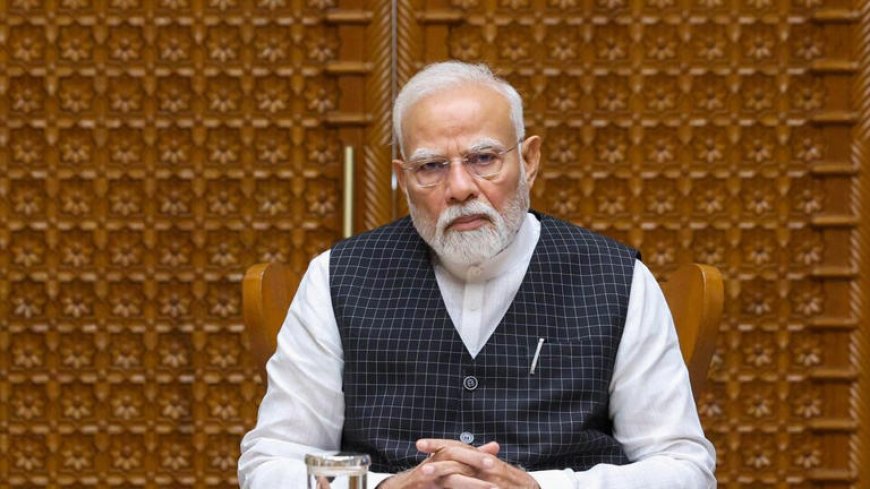Modi’s Tax Reforms: Boosting India’s Economy Amid US Tariff Tensions
Modi’s new tax reforms aim to streamline India’s economy while countering U.S. tariff pressures. A deep dive into policy impacts, trade tensions, and historical parallels.

When Prime Minister Narendra Modi’s administration introduced sweeping tax reforms earlier this year, it was framed as a pivotal step to streamline India’s economy, attract foreign investment, and respond to rising tariff pressures from the United States. Beyond headlines about corporate rates and compliance rules, these reforms are shaping the broader economic relationship between the world’s two largest democracies — and potentially redefining global trade balances.
Simplifying a Complex Tax Web
India has long struggled with a reputation for bureaucratic red tape. The introduction of the Goods and Services Tax (GST) in 2017 was a major step, but loopholes, compliance costs, and uneven enforcement limited its efficiency. Modi’s latest round of reforms aims to simplify corporate taxation by reducing overlapping levies, introducing digital-first compliance, and lowering entry barriers for small and mid-sized businesses.
Economists point out that this approach mirrors earlier reforms from the 1990s liberalization period, when India dismantled the “License Raj.” Then, as now, the goal was to send a strong signal to international investors: India is open for business.
Trade Pressures from Washington
While India has been cutting domestic barriers, tensions with Washington have intensified. The Trump administration has pressed for “reciprocal” trade policies, raising tariffs on certain Indian exports, particularly in textiles, pharmaceuticals, and IT services. In response, Modi’s government has positioned tax reforms as a counterbalance: making India a more cost-effective manufacturing and services hub to offset tariff disadvantages.
According to a recent Brookings Institution study, tariff frictions could shave up to 0.5% off India’s annual growth if left unchecked. However, a streamlined tax system could mitigate those losses by improving competitiveness, particularly in high-value industries like semiconductors, renewable energy, and digital services.
Comparative Lessons from the Past
India has faced external economic pressures before. In 1991, a balance-of-payments crisis forced reforms that liberalized markets and accelerated globalization. The current reforms, while not born out of crisis, reflect a similar urgency: align domestic structures with shifting global realities.
Unlike past reforms, however, today’s policy shift is intertwined with U.S.-India relations. The two countries have deepened defense ties, but trade frictions remain a sore point. Analysts say Modi’s reforms are not just about domestic efficiency but also about leveraging India’s economic stability as a bargaining chip in negotiations with Washington.
Impact on Everyday Indians
For the average citizen, the effects are gradual but tangible. Simplified tax codes mean easier compliance for small entrepreneurs, who often struggled under complex filing systems. Consumers, too, may benefit if reduced business costs trickle down into lower prices.
Yet there are concerns. Critics argue that without adequate enforcement, large corporations may exploit loopholes, while small businesses still face challenges transitioning to fully digital platforms. Civil society groups warn that reforms must be paired with stronger social safety nets to ensure equitable growth.
Global and Strategic Implications
India’s tax reforms also carry weight in global markets. If successful, they could attract multinational corporations seeking alternatives to China amid ongoing supply chain diversification. Moreover, they may strengthen India’s case in international trade negotiations, giving New Delhi leverage against Washington’s tariff escalations.
A policy brief by the Carnegie Endowment for International Peace argues that India’s reforms, if fully implemented, could boost foreign direct investment (FDI) inflows by 15–20% over the next five years. That kind of growth would not only buffer India against U.S. tariff shocks but also reposition it as a cornerstone of the global economic order.
The Road Ahead
Tax reform is never a one-time fix. It requires continuous adjustment, enforcement, and fine-tuning. For Modi’s government, success will hinge on whether the reforms deliver more than headline numbers — creating real ease of doing business and sustainable growth.
The U.S.-India trade relationship is entering a new phase, shaped not just by tariffs but by structural changes in how India manages its economy. While Washington’s trade stance remains firm, New Delhi’s reforms are a reminder that India is not just reacting but recalibrating for the long haul.











